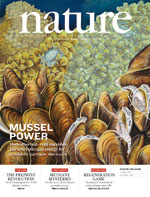Using CSF Biomarkers for Differential Diagnosis of Neurological Diseases
Diagnosing and treating patients more effectively earlier will, even if you aren’t able to instigate a cure, offer the ability to modify the disease progression and slow or delay when brain damage occurs. In the case of Alzheimer’s, once the amyloid plaques (tangles of misshapen proteins) have accumulated in nervous tissue, it has so far been impossible to untangle or remove them.
Subscribers can login to read more below:
This content is restricted to subscribers
Last year, I interviewed Dr Todd Sherer, (then the Chief Program Officer) and now the CEO of the Michael J. Fox Foundation, who told me that: “biomarkers are a real focus of the foundation.” Sherer went on to say that:
“Parkinson’s is a difficult disease to diagnose, there is no definitive diagnostic test, so it ends up a clinical diagnosis. Getting a biomarker that could help better confirm the diagnosis would allow people to get the correct treatment earlier in their disease”
Which is why I was interested to see new research published earlier this week in the journal Archives of Neurology (online first, August 27, 2012), by Sara Hall and colleagues at Lund University, University of Gothenburg and Skåne University Hospital in Malmo, Sweden.
Hall and colleagues describe how a panel of five cerebrospinal fluid (CSF) biomarkers allowed the differential diagnosis of common dementia from Parkinsonian disorders:
- Beta-amyloid 42
- Total tau
- Phosphorylated tau
- Alpha-synuclein
- Neurofilament light chain
Patients with early symptoms of neurodegenerative diseases can be hard to diagnose. Misdiagnosis can occur, which means patients may not respond to treatment or they could be enrolled into a clinical trial, and end up skewing the results.
Ensuring that we have the right patients in clinical trials is important as we seek to alter disease progression. In other words it’s important to see whether new drugs or treatments are impacting the disease course. If you have a wrongly diagnosed patient in a trial, then the drug may show no effect, not because it’s not effective, but that patient’s disease is not responsive.
Multivariate analysis indicated that the panel of 5 CSF biomarkers could accurately differentiate Alzheimer’s disease (AD) from Parkinson disease with dementia (PDD), and dementia with Lewy bodies (DLB). The Neurofilament light chain biomarker alone could differentiate PD from atypical Parkinson disease, Hall and colleagues noted.
Whilst the panel was not able to distinguish all forms of dementia, in an accompanying editorial Richard J. Perrin MD, PhD from the University of Washington, stated that this research “represents a significant step forward.” Perrin concluded that:
Summary
Developing biomarkers that assist in the ability to diagnose Alzheimer’s, Parkinson and dementia patients correctly, and then be able to monitor their subsequent disease progression, should be a key focus of those biotechnology and pharmaceutical companies that want to do innovative and rational drug development.
References
![]() Sara Hall, MD, Annika Ohrfelt, PhD, Radu Constantinescu, MD, Ulf Andreasson, PhD, Yulia Surova, MD, Fredrik Bostrom, MD, Christer Nilsson, MD, PhD, Hakan Widner, MD, PhD, Hilde Decraemer, Katarina Nagga, MD, PhD, Lennart Minthon, MD, PhD, Elisabet Londos, MD, PhD, Eugeen Vanmechelen, PhD, Bjorn Holmberg, MD, PhD, Henrik Zetterberg, MD, PhD, Kaj Blennow, MD, PhD, & Oskar Hansson, MD, PhD (2012). Accuracy of a Panel of 5 Cerebrospinal Fluid Biomarkers in the Differential Diagnosis of Patients With Dementia and/or Parkinsonian Disorders Arch Neurol. DOI: 10.1001/archneurol.2012.1654
Sara Hall, MD, Annika Ohrfelt, PhD, Radu Constantinescu, MD, Ulf Andreasson, PhD, Yulia Surova, MD, Fredrik Bostrom, MD, Christer Nilsson, MD, PhD, Hakan Widner, MD, PhD, Hilde Decraemer, Katarina Nagga, MD, PhD, Lennart Minthon, MD, PhD, Elisabet Londos, MD, PhD, Eugeen Vanmechelen, PhD, Bjorn Holmberg, MD, PhD, Henrik Zetterberg, MD, PhD, Kaj Blennow, MD, PhD, & Oskar Hansson, MD, PhD (2012). Accuracy of a Panel of 5 Cerebrospinal Fluid Biomarkers in the Differential Diagnosis of Patients With Dementia and/or Parkinsonian Disorders Arch Neurol. DOI: 10.1001/archneurol.2012.1654
Richard J. Perrin, MD, PhD (2012). Cerebrospinal Fluid Biomarkers for Clinical Trials Arch Neurol. (August 27 Online First) DOI: 10.1001/archneurol.2012.2353


